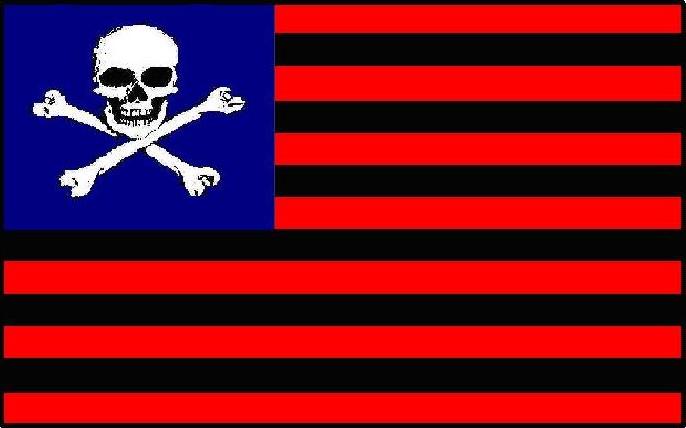- Examine the roots of the arguments for and against the expansion of an American Empire at the turn of the 20th Century
- Identify ideological foundations of two conflicting historical primary sources
Starter 9.24: Interpret the rhetoric of the political cartoons. For each: What perspective is it advancing? What ideology does the cartoon seem to be reflecting?
Background Knowledge
John Green on American Imperialism
Teddy Roosevelt and the Spanish American War
Overview of the Imperialism Debate
Define: yellow journalism
Mark Twain's rhetoric and proposed flag:
In a February 1901 article titled, "To the Person Sitting in Darkness," he criticized the U.S. policy in the Philippines:
There must be two Americas: one that sets the captive free, and one that takes a once-captive's new freedom away from him, and picks a quarrel with him with nothing to found it on; then kills him to get his land. . .
True, we have crushed a deceived and confiding people; we have turned against the weak and the friendless who trusted us; we have stamped out a just and intelligent and well-ordered republic; we have stabbed an ally in the back and slapped the face of a guest; we have bought a Shadow from an enemy that hadn't it to sell; we have robbed a trusting friend of his land and his liberty; we have invited clean young men to shoulder a discredited musket and do bandit's work under a flag which bandits have been accustomed to fear, not to follow; we have debauched America's honor and blackened her face before the world. . .
And as for a flag for the Philippine Province, it is easily managed. We can have a special one--our States do it: we can have just our usual flag, with the white stripes painted black and the stars replaced by the skull and cross-bones.

Primary Source Analysis:
Senator Beveridge and the Anti-Imperialists
Feedback for Jessica
Check-in: How are we doing? Where are we going?

